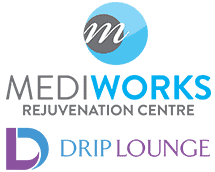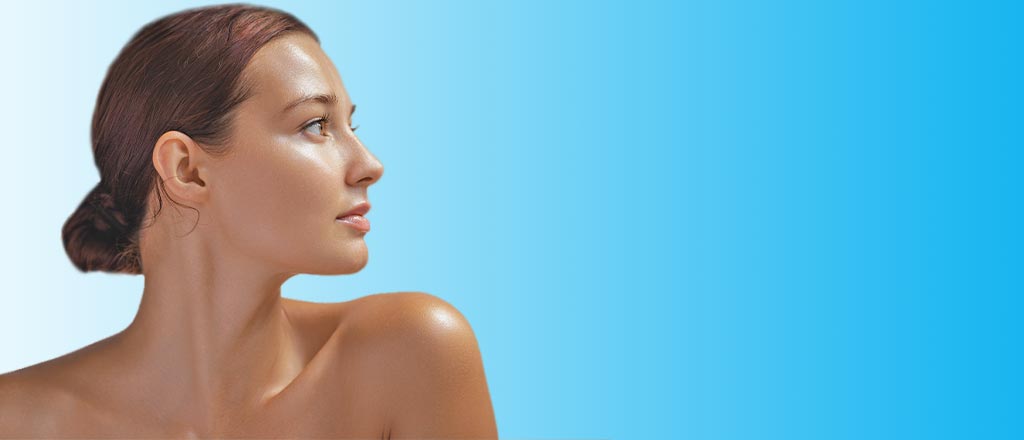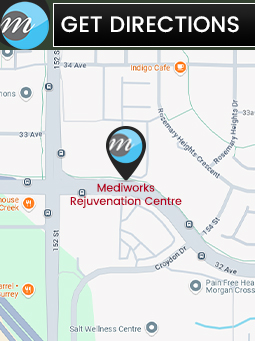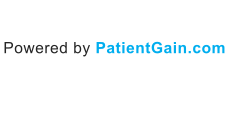PRP Orthopedic Therapy in South Surrey BC
Are you looking for a comprehensive treatment for chronic joint pain, ligament strains, rotator cuff injuries, and more. Come to Mediworks Rejuvenation Centre today for PRP therapy! For more information, contact us or book an appointment online. We are conveniently located at Unit #103 – 15222 32nd Avenue Diversion, Surrey, BC V3Z 0R8, Canada.
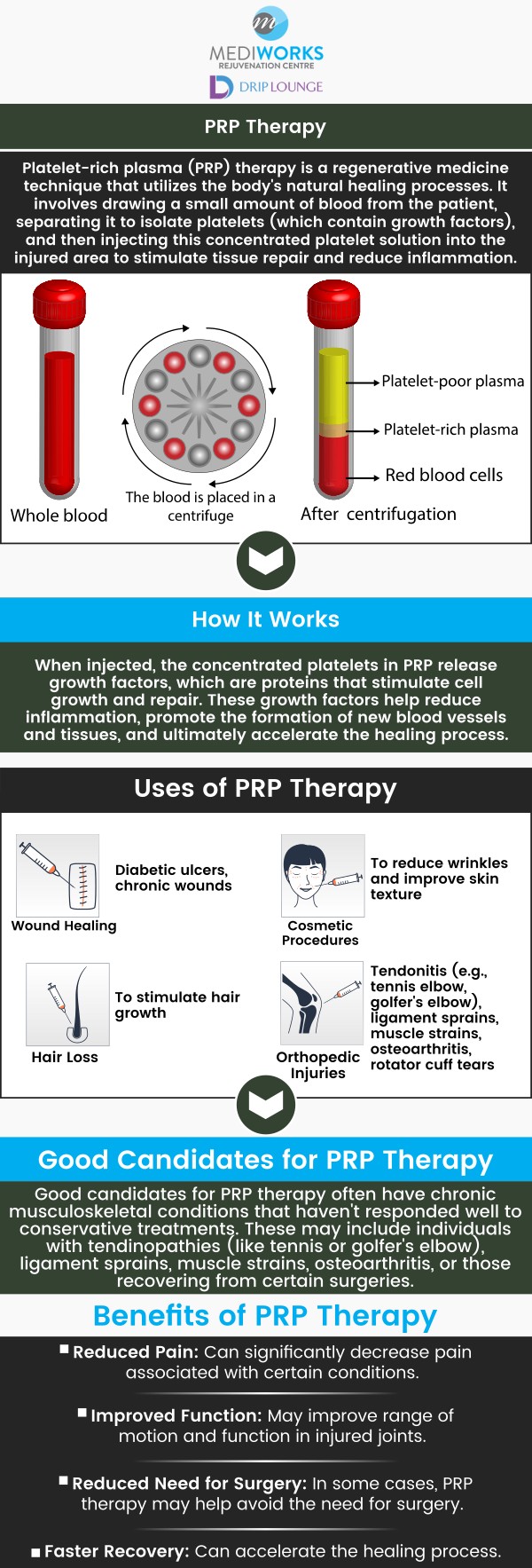
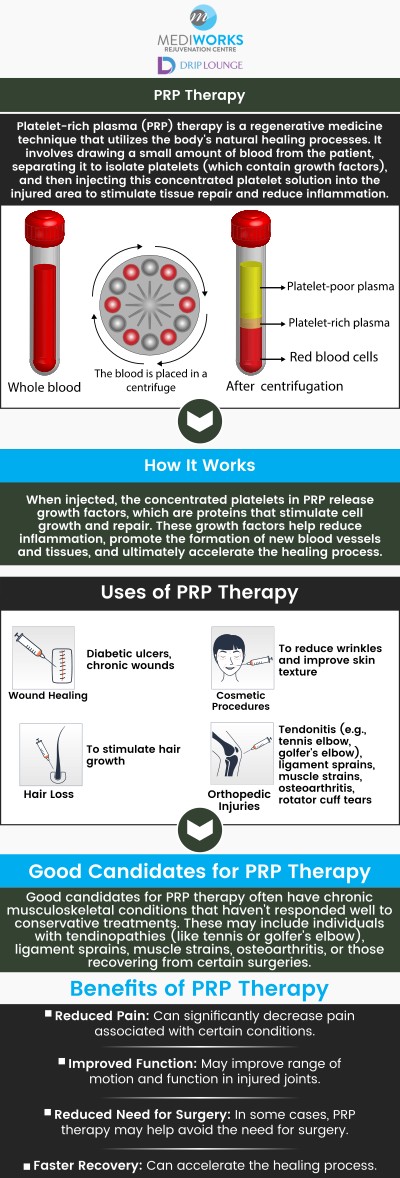
Table of Contents:
What is Platelet Rich Plasma (PRP)?
How is PRP done?
How often are injections given?
When can I expect to see improvement?
Are there risks with PRP?
What are some applications of PRP in sports medicine?
Evidence for the benefits of PRP
What does PRP treatment cost?
What is Platelet Rich Plasma (PRP)?
Platelet Rich Plasma (PRP) is a general term for new technologies that are focused on enhancing the healing response after injury of different tissue types. To understand PRP’s mechanism of action and possible applications, it is important to be familiar with the general healing response. General healing follows a pathway that begins with inflammation lasting days, continues with cellular and matrix proliferation for weeks, is followed by tissue formation and maturation for months, and ultimately, finishes with tissue remodeling, which takes years. PRP preparations contain high concentrations of platelets that, once activated, undergo degranulation to release growth factors with healing properties. They also contain plasma and other growth factors implicated in wound healing, in addition to thrombin, which has inherent biological and adhesive properties.
What growth Factors are important in healing:
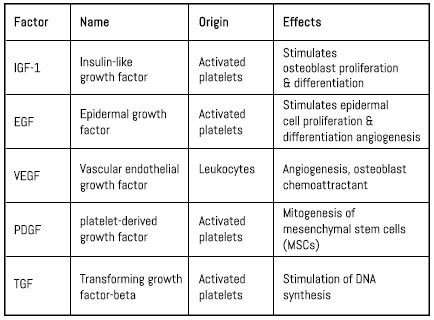
When injury occurs, blood immediately rushes to the site and comes in contact with damaged collagen. This indicates the start of the healing process. Blood contact with collagen stimulates platelets within the blood to degranulate and release GFs such as PDGF, VEGF, and fibroblast growth factor (FGF), resulting in hematoma or clot formation. PDGF activates the appearance of neutrophils and macrophages within the first hour of injury to start clearing the site and start the production of type III collagen. After 7-10 days, type I collagen replaces the type III collagen, and healing proceeds to completion, normally within 21-28 days post-injury. Platelet concentrate products may help the normal healing process by concentrating GFs all at once in one location.
The basic mechanism for preparing PRP involves the withdrawal of the patient’s blood in the office, followed by centrifugation to obtain a concentration of platelets and cytokines well above the serum baseline. The selected part of the prepared concentrate (plasma) is then injected into the region where it is required. This may be intralesional (as in the muscle), intra-articular (as in ACL reconstruction), or surrounding the involved tissue bed (e.g., within the Achilles tendon sheath after rupture repair). The entire treatment, from the blood draw to solution preparation, to injection, takes 30-40 minutes. Before injections are given the skin and underlying tissue are first anesthetized to minimize the discomfort.
After the initial treatment, a follow-up visit is scheduled 4-6 weeks later to check on the healing progress. Some patients respond very well to just one treatment. However, typically 2-3 treatments are necessary. Injections are given every 4-6 weeks on average
On average, most patients start to see signs of improvement anywhere from 4-8 weeks after treatment. This can be less overall pain, an ability to do more activity before pain sets in, and/or faster recovery from pain.
Anytime a needle is placed anywhere in the body, even getting blood drawn, there is a risk of infection, bleeding, and nerve damage. However, these are very rare. Other complications, though rare, can occur depending on the area being treated, and will be discussed by your doctor before starting treatment. Because PRP uses your own blood, you cannot be allergic to it.
PRP systems have shown good results in various medical fields, from implantology to the treatment of vascular ulcers. Sports medicine patients want a rapid return to their pre-injury level of function, and PRP may have certain applications that will speed recovery in cases of the tendon, ligament, muscle, and cartilage disorders.
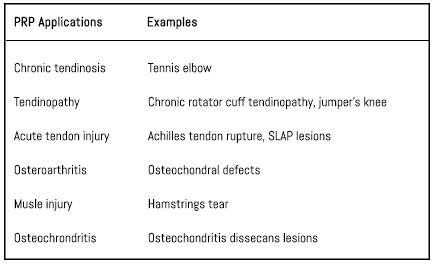
Evidence for the benefits of PRP
Platelet Rich Plasma (PRP) has been widely studied since the early 1980s and the first publication on its benefits for muscle healing was published in 1986. Since then, there have been many in-vitro clinical studies demonstrating its benefit in enhancing the healing process in numerous areas of the body:
What does PRP treatment cost?
At Mediworks, the cost of PRP treatment is based on the level of complexity involved in treating a given area(s). Prices range depending on the individual client. For more information, visit us today. We serve patients from Surrey BC, Burnaby BC, Langley City BC, White Rock BC, New Westminster BC, Vancouver BC, and nearby areas.
